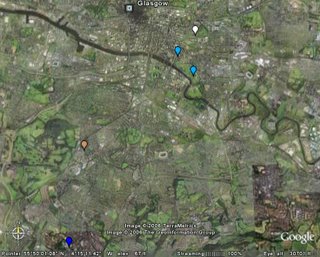Mumbai misery
Categories: Urban , s1 and s2 , writing and assessment, Other

I have been trying to copy my Mumbai tour on Google Earth to ourmedia, and although I have managed to save the tour, the images come up as big blue X's.This is it as we see it at present, I'll try to find a way round this-the important things are all still there, the placemarks, the summaries etc. Why not copy the file and save your own images for this? In the meantime, a nice image of Mumbai from Flickr . OK, tomorrow(today?)-s1 will be continuing their work on settlement. I think we will do a map from memory, and an image or two set up on the whiteboard with a microphone to get us started. Maybe a good time to use the Glasgow Google Earth tour I have. s2-Will have some Brazilian music as background as we start the topic with a brainstorming session-time runs out when the music stops. We might put a short slide show together of the results. Then a little work with some images, and an activity from the 'Places' textbook-although not forgetting we still have some movies to see. s3 will refer back to our Mumbai introduction, a little textbook work, while a class assessment task will be ongoing using the whiteboard. I think there is a lot of scope for some of Monday's work to be showcased here, so finger's crossed (I have been saying this for a while). S5/6 will be doing revision stations, and one will involve use of the wiki , which I see has its first entry-remember it is for you to use and change, please take advantage of the resource you have.







